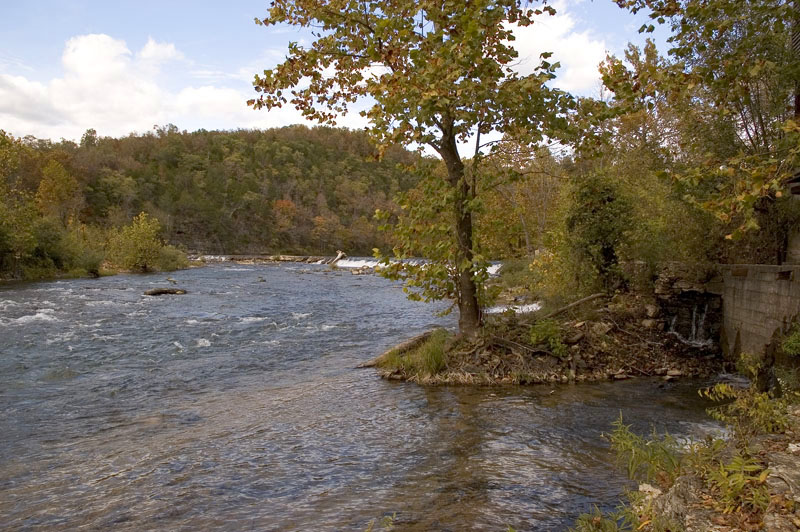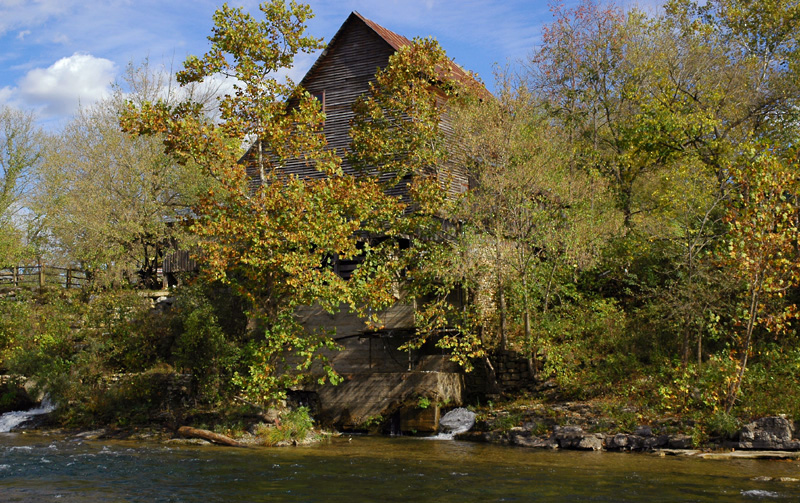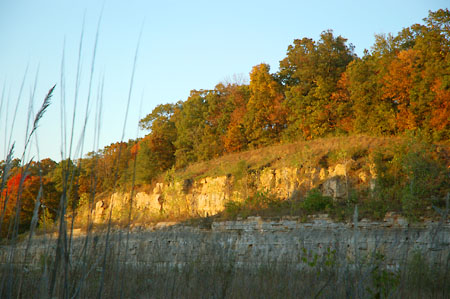Yesterday I drove to the core of the Ozark region, in south central Missouri near Mountain View. I wanted to check out how far along the fall foliage was, and also to look at a couple of the old mills along the North Fork river.
Along the way, I spotted my first Missouri armadillo. Unfortunately, it was road kill, but I hope to see more live ones towards the end of October when I’ll spend a couple of days in the area, taking photos. The trip is just too far to make for effective day shoots, and, frankly, there’s also too much to see — I thought the area around the Meramec or the Missouri or Mississippi rivers was lovely, but there’s something about the white water charm and crystal clear waters of the North Fork that appeals to my Northwestern roots.

I wonder if I’ll ever discover all of the faces Missouri shows. There’s the southern face along the Mississippi, through St. Louis and along the north-south trek. Then there’s the east-west feel of Missouri along the Missouri River, with its old Indian legends and the Lewis and Clark trail. Towards Kansas City is that strong midwestern influence of corn and wheat and cattle and good steaks–enough to make a man want to loosen his bible belt. And now there’s the Ozarks and the odd backwoods magical feel to the forest, as if one can expect gnomes to pop up at any moment. Or at least a hillbilly or two.
The Ozarks with its old bridges and mills, such as the old Dawt Mill that I visited yesterday.

The North Fork river is just what it sounds like, the northern fork of the White River. Its crystal clear waters are home to rainbow trout so if one gets tired of fishing for catfish along the ‘Sip, one could drop over for a little trout fishing.
(Speaking of trout, if you ever get a chance to go trout fishing, there is nothing better in the world than freshly caught trout, pan fried. You can keep your fancy sauces, and gourmet presentation. Just coat that bugger and fry it up nice and golden in a cast iron skillet, and dig in with your fork. No need to dirty any plates. )
The river winds alongside Mark Twain forest where black bear gambol about with bobcat, armadillos, white tailed deer, coyote, river otters, and gray and red fox. According to the Ozark Fall Foliage report this is a good year to get photographs of the critters.

The weather has been rainy, which is good for the vegetation, but not for photos. My hope is to time my second trip just right to get the foliage at or near peak, heading down into Arkansas as well as staying in Missouri; spending a few days, exploring and taking photos. I’ll probably head down the last week of October.
I had a wonderful drive yesterday. I really enjoyed seeing new scenes, and tripping around the mill, exploring. Next to the mill was a bridge across the river that was basically a plain concrete slab — no walls– and just wide enough for a car. Or a person on foot, like myself. I also explosured around the mill knowing that this time of year, at least, I don’t have to worry about accidentally brushing against poison ivy; it turns a brilliant scarlet in the fall and is easy to spot.
I also enjoyed the drive — putting on some good music, and just going with the flow of the traffic. More than that, though, it was good to get away from the computer. I must be away more in the future.
There’s so much beauty around us. And it goes by so quickly. About as quickly as the last of the fall color. As Gary Cooley from the Ozark Mountain Website says:
Once the peak is here the leaves are at a very tender stage. They dangle by a few molecules at the stem base where it connects to the twig. One good storm and down they come.
Same can be said for most of life, eh?


